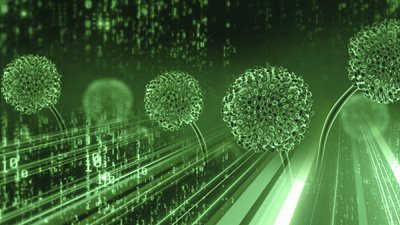The Four Key Benefits of Rapid Micro Methods
By the bioMérieux Editors | Reading time: 2 min 30 s
PUBLICATION DATE : JULY 1st, 2022
Over the past few years, there has been a boom in the adoption of new technologies in bioproduction and cell and gene therapy. Leading pharmaceutical companies are heavily investing in technologies like artificial intelligence (AI) as an approach to speed up drug development and lower the cost of bringing new medicines to market.
These organizations are willing to lay down an initial substantial investment in AI because they expect technological advancements to pay for themselves in the long run.
Similarly, industry leaders are increasingly investing in rapid microbiological methods (RMMs) and have already realized significant gains in detection sensitivity, automation, throughput, time-to-result, and return on investment (ROI) by replacing classical methods with these alternative technologies. Adoption of RMM has also been facilitated by regulatory approvals for the routine use of RMMs, from authorities such as the U.S. FDA, EMA, and Japanese PMDA.
Additionally, novel cell and gene therapies have helped push a more widespread acceptance of rapid and alternative methods due to their short shelf life and low production volume, overcoming the limitations of traditional sterility methods, which may take up to 14 days to deliver results.
RMMs present unique advantages over traditional methods that could ultimately drive significant savings.

1. Considerable time-savings
For an alternative method such as an RMM to be used as a replacement for a traditional method, the new technology must be validated and perform as well as, or superior to, the original method. In the case of RMMs, this superiority usually translates as faster time-to-result and increased efficiency.
Traditionally, growth-based methods require growing microorganisms in media, which microbiologists must examine visually, looking for colony-forming units (CFU) in solid media types and measuring turbidity in liquid broths. Both of these processes can take days due to the limitations of the human eye—microorganisms must develop and become large enough for a microbiologist to be able to examine. RMMs, on the other hand, usually use markers that can be detected by an instrument at a low number of CFU. By eliminating the lengthy colony-forming step, RMMs are able to produce results much faster, even within hours.
2. Immediate reactions to contamination
Corrective actions can be taken earlier because RMMs provide faster results, thus enabling a more proactive response to instances of microbial contamination and out-of-trend situations. With traditional methods, results can take days, making it difficult to pinpoint exactly when and where a contamination issue may have originated. Additionally, RMMs can assist in the design of more robust, automated processes that could reduce the opportunity for contamination altogether.
3. Financial savings and brand protection
The speed and efficiency that RMMs can bring to an operation can have a significant effect on an organization’s bottom line. From a manufacturing perspective, a faster time to result can enable companies to release raw materials quickly, transfer in-process work to the next stage, and bring finished products to market, which can shorten the production cycle, reduce inventory requirements, and free up working capital.
As mentioned above, RMMs offer the ability to quickly detect, control, and recuperate from contamination issues—and any delay in identifying a contamination event can have a major financial impact. Thus, the added speed and agility that RMMs offer may facilitate substantial financial savings and brand protection.
4. Optimization of staff time and labor
Traditional microbiological methods are not only time-intensive, but labor-intensive. Automating key processes with RMMs can free up staff to focus on more impactful activities that can bring more value to the organization.
Along the same lines, with automation usually comes enhanced objectivity. Some rapid methods can help laboratories reduce worker subjectivity, and automated systems that provide test results in a clear, pass–fail approach can take the guesswork out of plating and waiting.
_
Despite RMM technology typically coming with a higher up-front cost, the advantages over traditional methods must be calculated into the organization’s ROI. Many of the benefits of RMMs contribute to increased savings, which can outweigh the initial cost over time. In the ever-evolving pharmaceutical landscape, adoption of RMMs can help optimize laboratory workflows, leading to overall financial gains and impact outside of the laboratory.
Opinions expressed in this article are not necessarily those of bioMérieux.
SHARE THIS:
- Pharmaceutical Quality Control